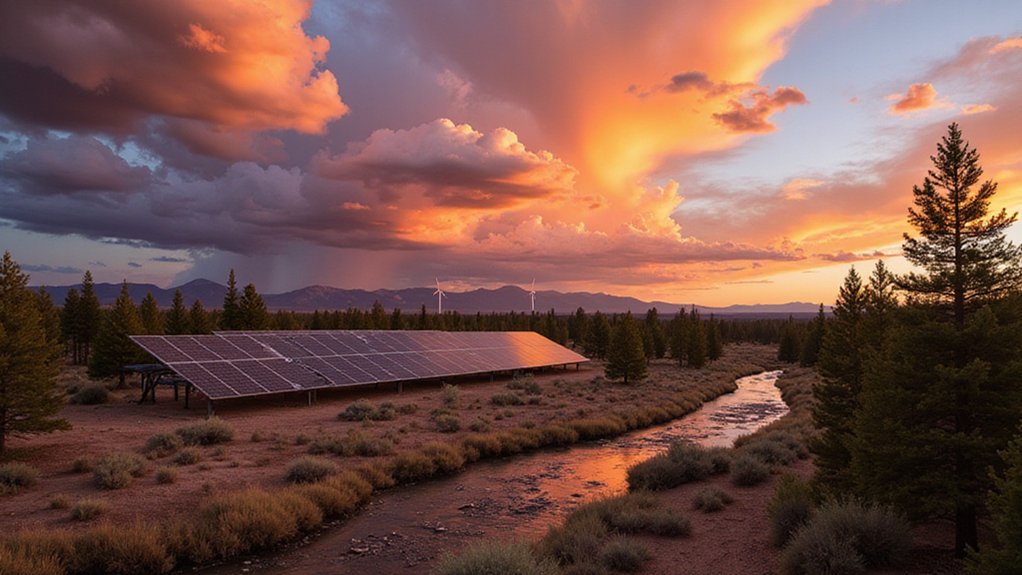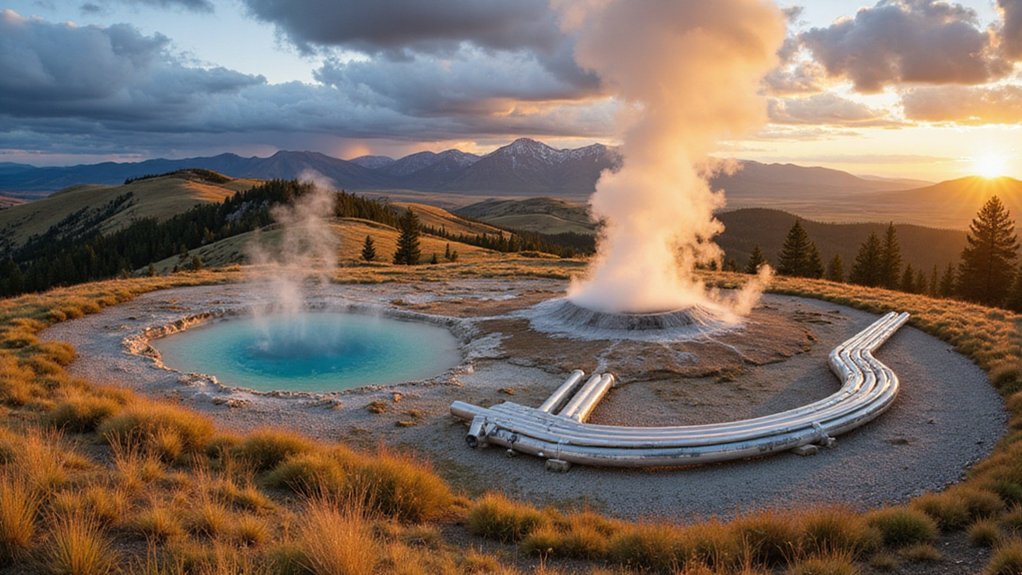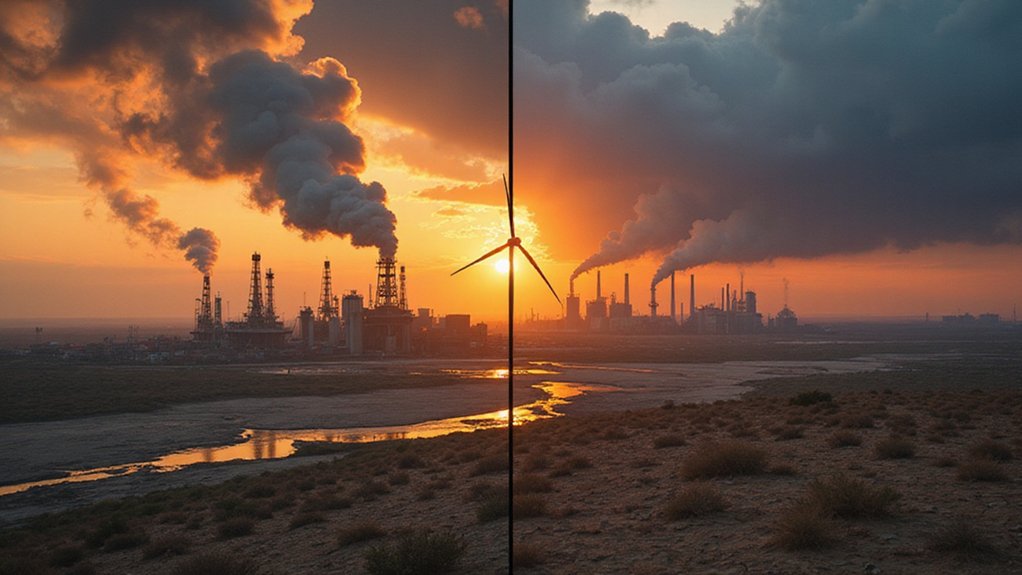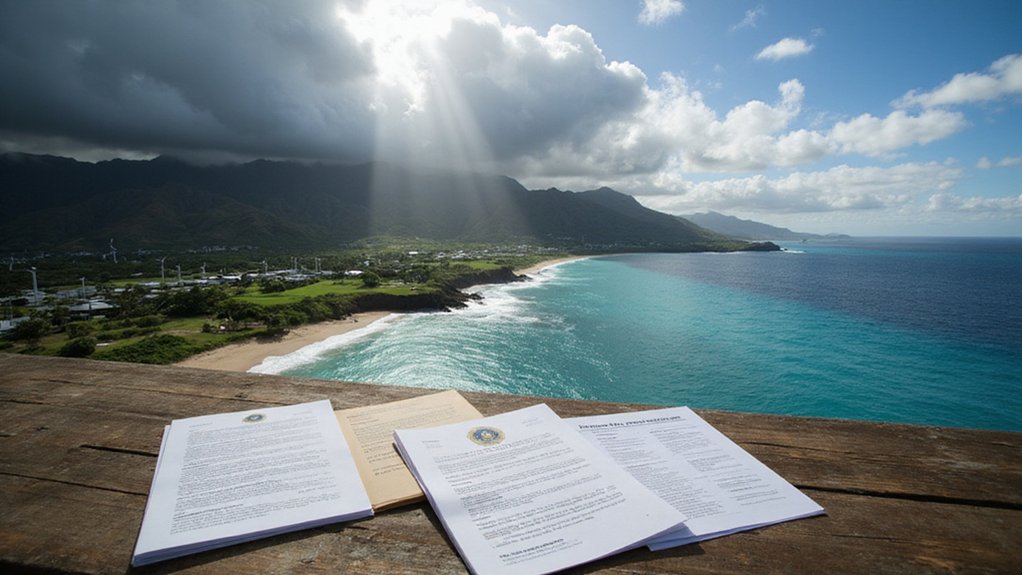New Mexico took major steps toward climate action in 2025. The state passed several key environmental laws despite political opposition. Senate Bill 21 protects waterways, while Senate Bill 83 provides $13 million for climate planning. House Bill 140 addresses dangerous PFAS chemicals in communities. These changes have boosted renewable energy production and created new jobs. Local governments now have more control over their environmental decisions. What’s next for this southwestern state’s green agenda?
New Mexico has taken bold steps toward environmental protection with a wave of new climate legislation in 2025. The state legislature passed Senate Bill 21, creating a Pollutant Discharge Elimination System that gives the state control over water pollution permitting. This law is essential since about 95% of New Mexico‘s rivers and streams were previously unprotected due to federal regulatory rollbacks.
The state’s budget included approximately $266 million for climate and environmental programs this year. This substantial investment supports initiatives across multiple agencies including Economic Development, Minerals and Natural Resources, and Workforce Solutions. Senate Bill 83 provided $13 million specifically for state agencies to develop climate master plans. The bill established a dedicated $13.5M fund for sustainable energy innovation across state government.
Water protection has been a central focus of the legislative session. Prior to SB 21, 88% of wetlands in the state lacked adequate protection. The new law creates legal structures for state surface water permitting and protects ephemeral streams and isolated wetlands that are crucial for local ecosystems.
SB 21 finally extends crucial protection to New Mexico’s vulnerable wetlands and ephemeral waterways, safeguarding our natural heritage.
The New Mexico Environment Department received $7.6 million in 2024 to develop the permitting program.
House Bill 140 added PFAS firefighting foams to the hazardous waste act, addressing a significant source of toxic chemical pollution. This regulatory update helps communities that have historically faced environmental contamination issues.
The newly established Community Benefits Fund, created through Senate Bill 48, will distribute funding for environmental projects statewide. It’s designed to prioritize frontline and underserved communities that often bear the greatest burden from pollution.
Renewable energy expansion has also been a legislative priority. The state is following the national trend where renewable sources surpassed coal in electricity generation, making clean energy a viable economic alternative. Conservation Voters New Mexico’s thorough legislative tracking system revealed successful outcomes for numerous clean energy bills in the recent session. Lawmakers approved measures to modernize the electrical grid, upgrade systems to accommodate more renewable energy, and improve energy storage capabilities.
These changes aim to increase system reliability while supporting the state’s shift to clean energy.
The combined legislation enhances local control over environmental issues, creates new jobs in the green sector, and improves transparency in regulatory processes.









